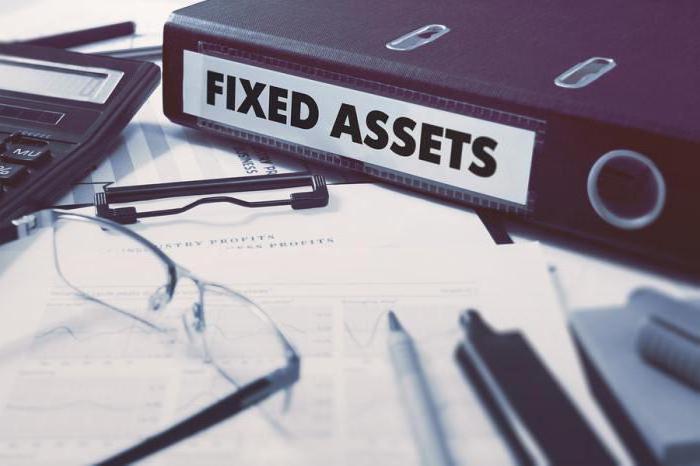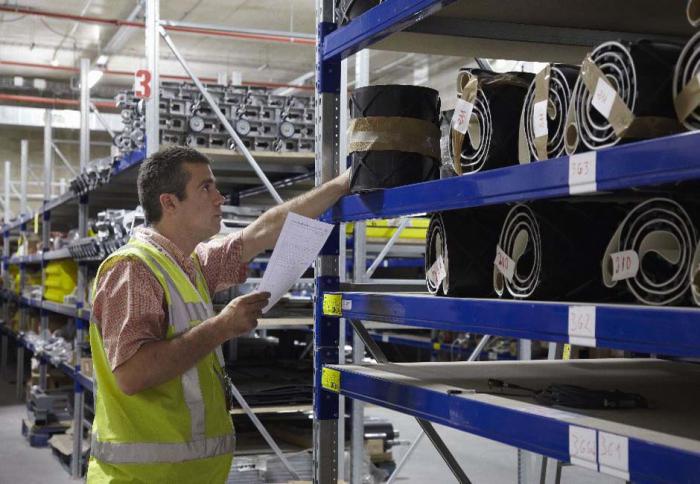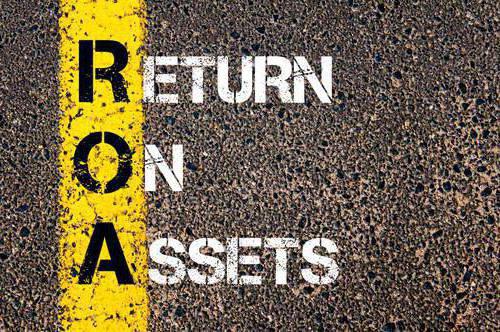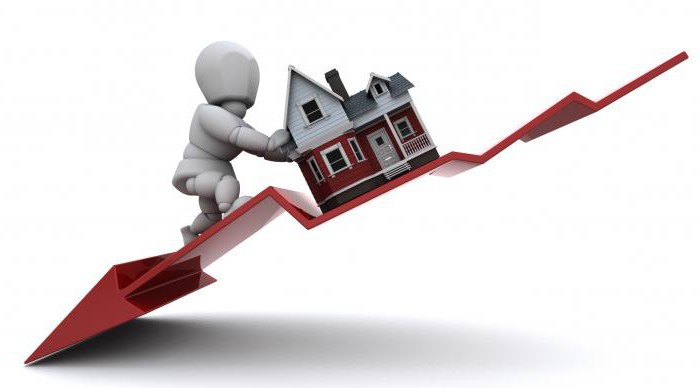The main types of means of production are negotiable and non-negotiable. Without them, no production process is possible. Their proper use is one of the main tasks of the enterprise. Fixed and working capital make up the capital of the company. They take part in the manufacturing process and are included in the cost of production. But if fixed assets are included in cost only partially, then working capital is fully.
Fixed assets (OS) - these are assets that take direct or indirect part in the production process for several years. They retain their shape and in parts transfer the value to the value of the products that the enterprise produces during one production period. For this, depreciation of fixed assets of fixed production should be accrued.

What relate to fixed assets?
Fixed assets include land, houses, various equipment, equipment, vehicles, etc. Work in progress, raw materials, and semi-finished goods do not belong to fixed assets.
If fixed assets are expressed in cash, they will be called fixed assets (PF). They relate to the socio-economic form of functioning of fixed assets. Based on the monetary value of public funds, it is possible to calculate how the company uses them and whether their financing is appropriate based on the value of the efficiency ratio.
Forms of fixed assets
They can be industrial and non-industrial purposes. The composition of the basic means of production, which are directly related to the manufacturing process and the sale of certain types of products, include labor means intended for material production.
Non-productive funds, however, do not directly participate in the manufacture of products, but play a large role, since they create the right conditions for the life and reproduction of workers. It is customary to include hostels, kindergartens, cultural centers, museums, and labor protection facilities owned by the enterprise.

Since an enterprise can produce various types of products outside its specialization, the fixed assets of such companies can be heterogeneous and play a different functional role. An example is the area of agriculture. Agricultural enterprises are able to engage in trade, construction and other activities in addition to their specialization, therefore, fixed assets are usually divided into agricultural and non-agricultural funds.
Agricultural and non-agricultural funds
This type of equipment includes buildings, equipment, working machines, measuring devices, laboratory tools, equipment, vehicles, household equipment. Moreover, all of the above should be used for more than one year.
To analyze the provision and evaluate their effectiveness, it is customary to divide them into three categories: plant growing, livestock, and general-purpose funds.

If we talk about this category of fixed assets, it is worth noting their focus on the diversification of production. These include trading funds, buildings and catering facilities.
To some extent, these funds characterize the level of agricultural integration. Accounting for fixed assets is also carried out for non-agricultural funds.
Forms of valuation of fixed assets
Fixed assets can be presented in two forms: monetary and in-kind. Their assessment and accounting are also carried out in these two forms in order to find out their technical condition, level of use and cost. Monetary valuation of fixed assets can be carried out in several directions:
- initial cost;
- residual value;
- market price;
- book value;
- replacement cost;
- liquidation value.
Initial cost - the amount of money for which the OS was purchased, taking into account the costs of their transportation, loading, unloading, installation, etc. The replacement cost reflects the costs of restoring the asset in modern conditions.
The residual value is calculated as the difference between the initial or replacement value and the depreciation of fixed assets of fixed production. The book value is considered the value of PF, which is displayed in the balance sheet of the company.

Salvage value is the amount of money for which fixed assets were sold or withdrawn from the production process. Market value - the probable selling price of fixed assets, which takes into account the real state of assets and the market situation. In calculating the effectiveness of financing, the residual value, if any, refers to the income of the enterprise.
Efficiency of use of OS and security of the enterprise with funds
Together with the determination of the composition and structure of fixed assets, it is necessary to assess their effectiveness and how well the company is provided with them. A large number of parameters are used for this. The most common of them are the following indicators:
- capital provision;
- capital-labor ratio;
- return on assets;
- capital intensity;
- rate of return.
In order to find out how the company is provided with fixed assets, it is necessary to calculate the capital adequacy. This indicator is calculated as the ratio of the value of fixed assets to the area of agricultural land. This option applies only to agricultural enterprises. The formula is as follows:
Fabout = Cthis year / Ps.u., Where
- Fabout - capital provision;
- WITHsg. - the average annual cost of fixed assets;
- Ps.u. - the area of agricultural land.
Armament of fixed assets
This indicator is also called armed labor. It is calculated as the ratio of the value of fixed assets for the year on average to the average annual number of employees of the enterprise. The capital-labor ratio parameter shows how much OS costs per one average annual employee of the company.
Fat = Csg. / KS.G., Where
- Fat - capital-labor ratio;
- TOthis year- the average annual number of personnel of the enterprise;
- WITHsg. - OS cost per year on average.
Return on fixed assets
This indicator is calculated as the ratio of the value of all products that have been produced by the enterprise during one year to the average annual value of the funds. The coefficient shows how much gross output is produced by the enterprise during one cycle per 1 monetary unit of funds that were invested by the company in fixed assets. The index must be greater than one.
Fabout = VP / Ssg., Where
- VP - all the company's products in monetary terms (including the cost of semi-finished products and work in progress);
- Fabout - capital productivity;
- WITHsg. –Format value per one year on average.
Fixed assets capacity
This indicator is the inverse of return on assets. It shows how much money the enterprise invests in fixed assets in order to get 1 ruble of gross output. The coefficient can be calculated using several formulas.
Fe = (Фabout)-1 = 1 / faboutwhere
- Fe - capital intensity;
- Fabout - capital productivity.
In the case when the OS return ratio is not found, capital intensity can be determined by the following formula:
Fe = (Cthis year / VP) Where
- Fe - capital intensity;
- VP - the value of gross output in monetary terms;
- WITHsg. - the average annual value of fixed assets.
Each company seeks to reduce capital intensity, since the growth of this ratio means a decline in the efficiency of financing fixed assets.
Rate of return
The rate of profit is an indicator that displays the percentage of all profits that were received by companies during the reporting production cycle to the cost of fixed and working capital.
NP = P / (Co.s. + Cabout.s ) * 100%where
- NP - rate of return;
- P - profit;
- WITHo.s. - the cost of fixed assets;
- WITHabout.s - the cost of working capital.

Reproduction of fixed assets
This group of indices includes the retirement rate and the recovery rate. The first can be calculated as the ratio between fixed assets in cash, which were withdrawn from the production process, to the value of fixed assets.
TOat = OSat / OSaboutwhere
- Fat - retirement rate;
- OSat - the cost of funds that have been withdrawn from production;
- OSabout - total cost of the OS.
The recovery ratio shows the value of fixed assets added to the production process during the year, in relation to the total amount of fixed assets of the enterprise.
TOsun = OSd / OSabout, Where
- TOsun - recovery factor;
- OSd - the cost of fixed assets that have arrived at the enterprise;
- OSabout - the total amount of fixed assets in monetary terms.
In addition, there are two forms of recovery of fixed assets:
- extensive;
- intense.
Extensive recovery reflects the growth rate of fixed assets used. Intensive restoration involves the replacement of existing fixed assets with new ones that can be more effectively used in the production process.
Calculation of the average annual value of fixed assets
Fixed assets in the production process can be sold and bought (introduced into the production process or derived from it). That is why to calculate indices that indicate how efficiently the enterprise uses its fixed assets, it is necessary to take not their value at the beginning or end of the reporting period, but the average annual value of fixed assets used in production:
- WITHsg. - the cost of fixed assets per one year;
- WITHn - the cost of fixed assets at the beginning of the period (initial cost);
- OSat - the cost of the OS that were seized;
- OSd - the cost of added to the production of OS;
- M - the number of months remaining to work the funds until the end of the reporting period;
- K is the number of months that the withdrawn fund has worked since the beginning of the period.
The cost of production of fixed assets
Fixed capital goods are operated over a long period of time, and this can lead to the fact that additional costs begin to appear. Depending on how they change, they can be divided into two types:
- fixed costs;
- variable costs.
Constants do not depend on how intensively the OS is used. They include depreciation if the tool is used as part of its planned capacity; the cost of using capital; insurance; tax deductions; costs of maintaining fixed assets.
Variable costs depend on the intensity of use of fixed assets. Examples of variable costs are repair costs and fuels and lubricants; depreciation charges, provided that the asset is used on top of its planned capacity; costs associated with the maintenance of the facility.

Depreciation deductions
For smooth operation should be accrued depreciation of fixed assets of fixed production.A prerequisite for recovery is a step-by-step reimbursement of the cost, which is carried out using depreciation. Depreciation is the process of transferring the value of fixed assets to manufactured products for their full compensation. Purpose of using depreciation:
- distribution of initial cost for the period of use of the funds;
- display of the actual book value of the fixed asset;
- capacity change financing.
The main factors that affect the depreciation of fixed assets are the initial cost, amortized cost, residual value and expected life of the asset. There are several methods by which you can calculate the depreciation amount:
- Straightforward.
- Cumulative.
- Decrease in residual value.
- Accelerated reduction in residual value.
- Industrial.
The specifics of depreciation
A feature of depreciation is that it can relate to both variable costs and fixed costs. This is due to the limited use of the machines. The limitation is caused by two factors:
- technical and moral obsolescence of equipment;
- depreciation of equipment in the process of its use, i.e. physical obsolescence.

For example, one machine has a production stock of 10,000 machine hours and can be used for a maximum of 10 years, then physical deterioration occurs. If it will not be used intensively, that is, less than 10,000: 10 = 1,000 machine hours per year, then the maximum period of use will be limited by its moral aging. In this case, when the actual intensity of use of the machine is lower than the so-called depreciation threshold (production stock of the fixed asset / recommended period of its use), the amount of depreciation deductions do not depend on the actual period of its use, that is, they are constant. If the annual intensity of use of the machine is above the depreciation threshold (in this example, above 1000 machine-hours), then its production stock (10,000 machine-hours) will be used in less than 10 years. This means that the amount of depreciation deductions depends on the period of use of the machine and should be taken into account as variable costs. With an intensity of use of 2000 machine-hours per year, physical wear of the machine will occur in 5 years, that is, it will be depreciated over this period. At 2500 machine hours per year - for 4 years, etc. Since depreciation charges, depending on the intensity of use of the fixed asset, can belong to both variable and fixed costs, they are called conditionally variable costs.